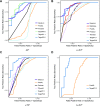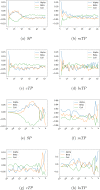Detecting sequence signals in targeting peptides using deep learning
- PMID: 31570514
- PMCID: PMC6769257
- DOI: 10.26508/lsa.201900429
Detecting sequence signals in targeting peptides using deep learning
Abstract
In bioinformatics, machine learning methods have been used to predict features embedded in the sequences. In contrast to what is generally assumed, machine learning approaches can also provide new insights into the underlying biology. Here, we demonstrate this by presenting TargetP 2.0, a novel state-of-the-art method to identify N-terminal sorting signals, which direct proteins to the secretory pathway, mitochondria, and chloroplasts or other plastids. By examining the strongest signals from the attention layer in the network, we find that the second residue in the protein, that is, the one following the initial methionine, has a strong influence on the classification. We observe that two-thirds of chloroplast and thylakoid transit peptides have an alanine in position 2, compared with 20% in other plant proteins. We also note that in fungi and single-celled eukaryotes, less than 30% of the targeting peptides have an amino acid that allows the removal of the N-terminal methionine compared with 60% for the proteins without targeting peptide. The importance of this feature for predictions has not been highlighted before.
© 2019 Armenteros et al.
Conflict of interest statement
The authors declare that they have no conflict of interest.
Figures













References
-
- Bahdanau D, Cho K, Bengio Y (2014) Neural machine translation by jointly learning to align and translate. arXiv Preprint posted September 1, 2014.
Publication types
MeSH terms
Substances
LinkOut - more resources
Full Text Sources
Other Literature Sources
